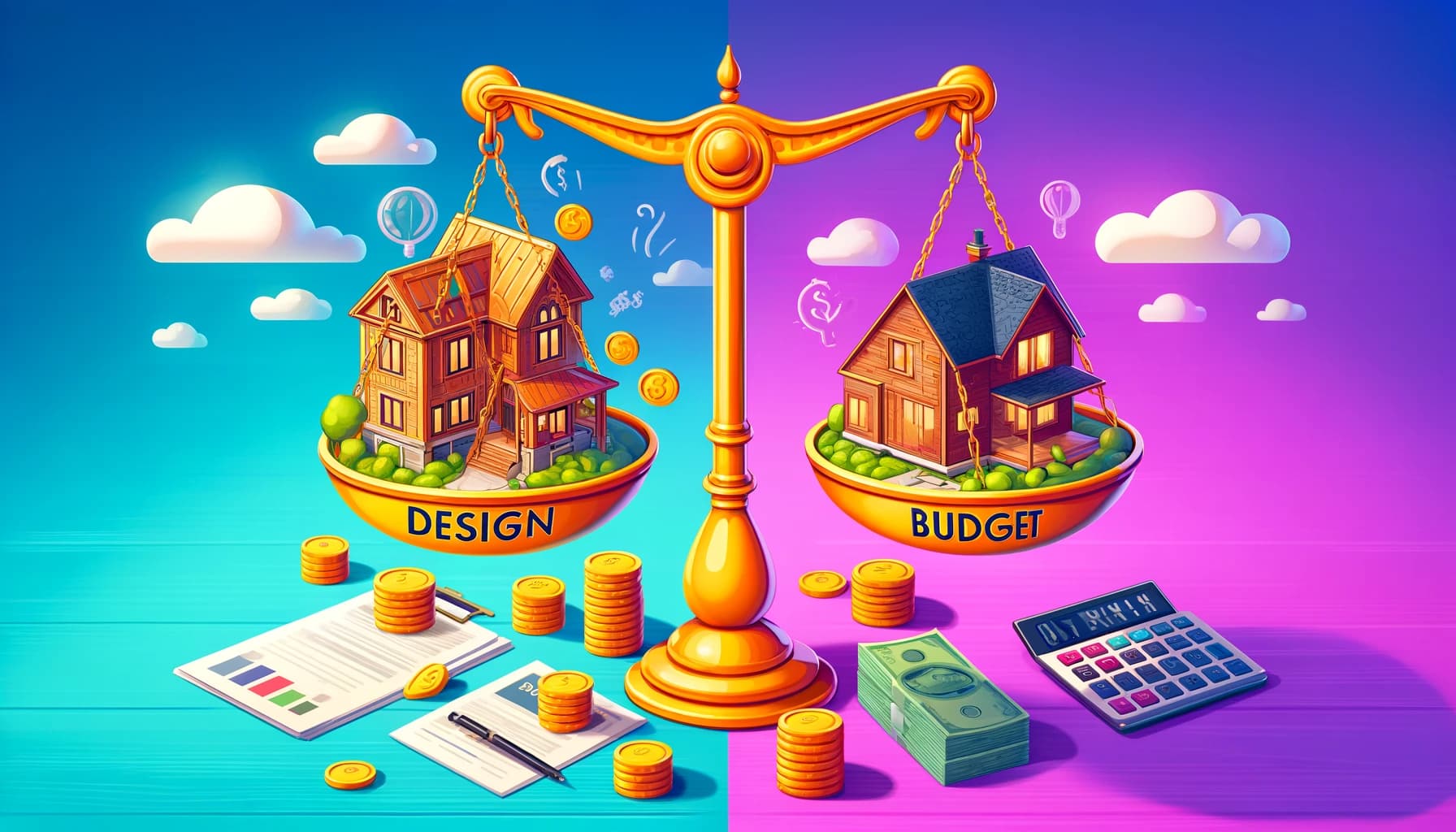Achieving Harmony: Balancing Design and Budget in Custom Home Building
April 08, 2024
~7 min read

Introduction
Following our exploration of the financial and emotional facets of custom home building in "Navigating the Financial and Emotional Journey of Custom Home Building", we dive deeper into the intricate dance between architectural design ambitions and budgetary limitations. This next phase in our series emphasizes the importance of finding a middle ground where dreams and reality coexist harmoniously, ensuring that your custom-built home reflects your personal aesthetic without straining your finances.
The Delicate Balance: Dreams vs. Budget
The process of custom home building often begins with grand visions and personal desires, but these must be carefully balanced against the practicalities of budget constraints. This balance is not about compromising your dream but about approaching it with strategic planning and creativity.
Cost-Effective Design Strategies
Incorporating cost-effective design strategies can significantly impact your ability to stay within budget while achieving your desired aesthetic. Techniques such as simplifying structural complexities, opting for alternative materials that mimic high-end finishes, and prioritizing features based on their long-term value can all contribute to cost savings without compromising on style or functionality.
The Role of Professionals: Architects and Builders
A key aspect of balancing design desires with budgetary constraints lies in the selection and collaboration with the right professionals. Architects and builders who are experienced in custom home projects can offer invaluable advice on how to achieve your vision within your budget. Their expertise in innovative design solutions and material selections can guide you through the decision-making process, ensuring that your investment aligns with both your aesthetic preferences and financial boundaries.
Navigating Compromises
Despite the best planning, compromises are sometimes necessary. However, these should not be viewed negatively. With the right mindset and professional guidance, compromises can lead to discovering new possibilities and alternatives that you might not have considered initially. The focus should always be on how to best utilize the available budget to fulfill your most valued desires for your home.
Sustainable Practices: Long-Term Savings
Incorporating sustainable practices and energy-efficient designs from the outset can lead to significant long-term savings. While some of these choices may require an upfront investment, the reduction in ongoing utility costs and the potential increase in property value can make them financially advantageous in the long run.
Financial Choices in Custom Home Building
Embarking on the journey of building a custom home requires thoughtful consideration of various financial aspects beyond the initial budget. Here are several critical areas to consider:
- Land Acquisition and Preparation: The cost of the land and the expenses associated with preparing it for construction (e.g., zoning, clearing, and grading) can significantly impact your overall budget.
- Permitting and Fees: Local regulations may require various permits for construction, utilities, and zoning. These fees can add up and should be accounted for early in the planning stage.
- Design and Architectural Services: Custom design work from architects and designers is a vital part of creating your dream home but comes at a cost. Balancing your desires with the scope of work is crucial to maintaining budget control.
- Construction and Materials: The choice of materials, labor costs, and the complexity of the design influence the construction cost. Exploring cost-saving materials and construction methods without compromising quality is essential.
- Contingency Fund: Unexpected expenses are common in construction projects. A contingency fund (typically 10-20% of the project cost) can help manage unforeseen costs without derailing your budget.
- Long-Term Operating Costs: Consider the future operating costs of the home, including energy efficiency, maintenance, and potential renovations. Investing in quality and sustainability can reduce long-term expenses.
- Financing: Securing financing for a custom home build often requires a construction loan. Understanding the terms, interest rates, and the process of converting to a mortgage upon completion is critical.
Conclusion
The journey of custom home building is a complex blend of creativity, personal expression, and financial prudence. By embracing a collaborative approach with the right professionals, adopting cost-effective and sustainable design strategies, maintaining a flexible mindset towards compromises, and carefully considering the various financial aspects of the project, you can navigate the delicate balance between design dreams and budget realities. This holistic approach ensures that your custom home not only reflects your personal style and meets your lifestyle needs but also remains a financially wise and rewarding investment. For more insights into the custom home building process, revisit our previous article, "The Ins and Outs of Custom Home Building", and stay tuned for our next piece in the series, which will explore innovative design trends in custom home construction.
The accuracy of the information provided in this article is not guaranteed